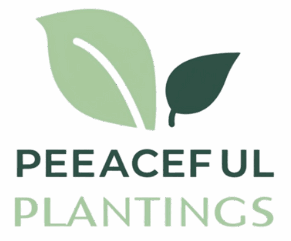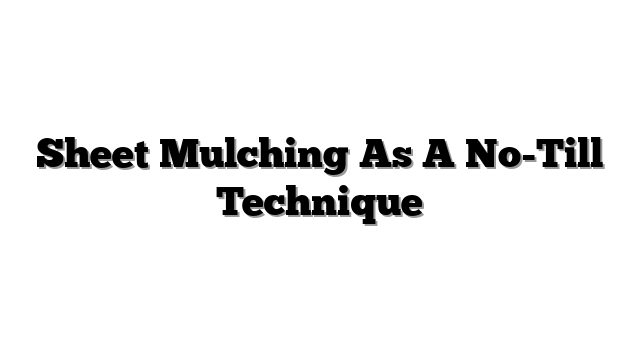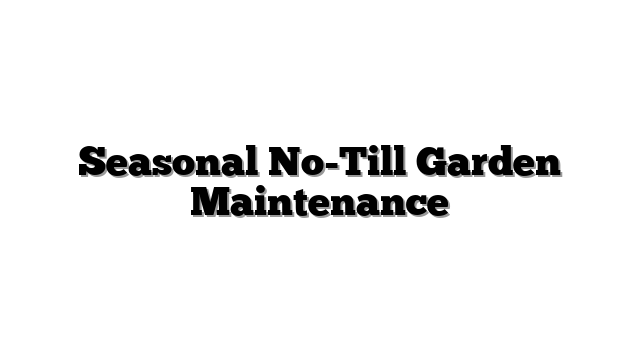Sheet Mulching As A No-Till Technique
Weeds vex gardeners. Compacted soil causes grief. Tilling hurts your back. Imagine a garden. Weeds are few. Soil feels rich. It crumbles easily. You till much less. You enjoy plants more. This sounds like a dream.
Meet Sheet Mulching as a No-Till Technique. It offers a new way. Achieve this dream garden. Some call it lasagna gardening. It builds soil naturally. It stops weeds. This guide helps you. Learn all about it. What is it? Why use it? Gather materials easily. Follow simple steps. Make vibrant garden beds. They need little work. This technique helps soil health. It boosts plant health. It works for gardening for beginners. It fits sustainable gardening. Learn how in 2025.
What is Sheet Mulching (Lasagna Gardening)?
Sheet mulching layers things. Build garden beds like a cake. Or a lasagna. You cover the ground. Use natural stuff. Cardboard works well. Newspaper helps too. Add compost. Add organic matter. This builds good soil. You do not dig. It makes a fertile spot. Time helps it work. It is a type of no-dig gardening.
Why Choose No-Till Gardening?
Tilling hurts soil. Old ways damage soil health. Tilling breaks soil structure. It makes hard layers. Soil loses its crumbliness. It harms tiny soil life. Microbes are hurt. Fungi suffer. Worms dislike it. These help feed plants. They are key for plant health. Tilling lets carbon escape. It goes into the air. This affects our planet. It brings weed seeds up. More weeds sprout.
The Core Principles of Sheet Mulching as a No-Till Technique
Smother plants already there. Weeds and grass die. Add organic matter. Build soil fertility. Improve soil structure. Work happens from the top. Make soil life happy. Give them a good home. Soil holds water better. This is water conservation. It saves water.
Superior Weed Suppression
The first layer stops weeds. Use cardboard or newspaper. It smothers plants below. Grass dies out. The thick mulch layer blocks light. New weed seeds cannot grow. They do not reach the sun. This cuts down work. You do less weed control. Much less pulling.
Rapid Soil Building and Improvement
Layers break down slow. Organic materials decompose. They add rich compost. Nutrients go to soil. This happens over time. Soil structure gets better. Air gets in easily. Water drains well. It happens naturally. Soil life gets fed. They make a lively place. This helps plant health. It is a true soil building technique.
Enhanced Water Conservation
Mulch layers hold water. They act like a sponge. Soil stays moist longer. Water does not dry up fast. Less water leaves the surface. You water less often. Good for dry places. Perfect for water-wise gardening. Saves time and water.
Reduced Labor and Maintenance (Low Maintenance Gardening)
No more tilling ground. This saves your back. Weeding takes little time. Work drops a lot. Make a bed ready to plant. No double-digging needed. Backyard gardening gets easier. More fun too.
Supports a Thriving Ecosystem
It makes a home for worms. Other good bugs move in. They find food there. It can stop soil washing away. Stops erosion. It fits sustainable gardening. It is part of organic gardening. It helps nature.
The Essential Layers: What You Need
Build layers carefully. Think of brown stuff. These add carbon. Think of green stuff. These add nitrogen. The bottom layer is key.
Layer 1: The Smothering Base (Cardboard & Newspaper)
This layer is very important. It kills plants below. Use plain cardboard. Corrugated cardboard works best. Remove tape. Take off labels. Pull out staples. Use black and white newspaper. Do not use shiny paper. Avoid glossy pages. These block light. They break down later.
Layer 2: The Nitrogen-Rich “Greens”
These add nitrogen. Use grass clippings. Make sure they have no sprays. Kitchen scraps work. Use compostables. Fruit peels are good. Vegetable scraps work. Coffee grounds help. Tea bags are fine. Do NOT use meat. No dairy. No fats. Add fresh plant bits. Aged animal manure is good. These feed soil life. They start breaking down.
Layer 3: The Carbon-Rich “Browns”
These add carbon. They give structure. Shredded leaves are great. Straw works well. Shredded newspaper helps. Shredded cardboard too. Pine needles can work. Wood chips are okay. Use fewer wood chips. Or use old ones. Shredded bark is fine. These stop soil packing down.
The Finishing Layer: Compost or Topsoil
Need a top layer. Use finished compost. Or good topsoil. This is for planting now. Add 3 to 6 inches. It gives plants a start.
Water is Key!
Water each layer well. Make it really wet. This starts decay. It helps layers settle. Do not skip watering.
Planning Your Sheet Mulch Project
Pick your spot first. Is it sunny? Is it shady? Think about water draining. Decide bed size. Choose a shape. Guess how much stuff you need. Look at the area size.
Preparing the Area (Minimal Effort Required!)
Cut grass short. Mow down weeds low. This helps a little. You do not need to dig. Leave plants where they are. Sheet Mulching as a No-Till Technique does the work. This is the good part.
Step 1: Laying the Cardboard/Newspaper Base
Cover the whole area. Put sheets close together. Overlap edges a lot. Six to eight inches is good. This stops weeds coming up. Go up bed sides if you build walls. Get this layer very wet. Soak it completely with water.
Step 2: Adding Alternating “Greens” and “Browns”
Start layering now. Like making lasagna. Add a few inches of “greens”. Then add a few inches of “browns”. Keep adding layers. Go back and forth. Use nitrogen stuff. Use carbon stuff. Make it high. Aim for 12 to 18 inches. It will get much shorter. Water each layer well. Add water as you build.
Step 3: Capping with Compost or Topsoil
Put the last layer on top. Use finished compost. Or use good topsoil. Make this layer 3 to 6 inches thick. You plant right into this. Water the whole bed well. Make it good and wet.
The Waiting Game (and Planting!)
Things break down now. It starts right away. Wait a few months if you can. Fall and winter are good times. Plant in spring for best results. You can plant sooner. Make a hole. Go through all layers. Dig down to old soil. Fill the hole with compost. Plant your plant there.
Essential Tips for Sheet Mulching Success
Overlap cardboard edges well. Stop weed escapes. Water every layer thoroughly. Moisture helps decay. Mix greens and browns well. Have about the same amount. Be patient with it. Nature works slowly. It shrinks a lot. Remember the starting height.
Troubleshooting Common Sheet Mulching Issues
Bed feels too dry? Water it more. Add more greens. Greens hold water better. Bed smells bad? Too many greens maybe. Not enough air flow. Add more browns. Poke some holes. Let air get in. Still see weeds? Layers might be thin. Cardboard did not overlap enough. Some weeds are tough. Dig out roots first. Bindweed is tricky.
Does it attract pests? Usually no problem. Do it the right way. Healthy beds attract good bugs. Earthworms come. Do not use meat. No dairy. No greasy scraps. Use only plant stuff. This keeps bad pests away.
Sheet Mulching & 2025 Gardening Trends
It fits new ideas. Native plants are popular. This method prepares soil. It does not disturb it. Good for local plants. Supports local nature. Water conservation is key. This method saves water. It is a main benefit. Water concerns are growing. Use it in small spaces. Raised beds work. Containers too. Good for small backyard gardening. Works on city patios. It is regenerative. Regenerative gardening builds soil. It helps nature heal. Sheet mulching does this.
Maintaining Your Sheet Mulched Bed
Add more stuff later. Put more mulch materials on top. Straw or wood chips work. Do this every year. It stops new weeds. It adds more organic matter. Add more compost sometimes. Put it on top.
Frequently Asked Questions About Sheet Mulching
How soon can I plant? Wait 3 to 6 months. This allows decay. Especially over grass. You can plant now. Cut through layers. Add compost in the hole. Plant there.
Can I put it over grass? Yes! This is a big plus. Cardboard covers grass. It kills it. No digging grass first. Good for gardening for beginners. Makes new beds easy.
What cardboard is safe? Use plain kind. Corrugated is best. Remove all tape. Take off labels. Remove staples. Use black newspaper. Avoid shiny paper. Avoid bright colors. No plastic on it. Use simple paper.
Does it attract pests? Not usually. Healthy beds get good bugs. Earthworms come. Do not use meat scraps. No dairy. No fat. Use only plant organic materials. This avoids pests.
Is it good for all plants? Most annuals like it. Perennials do well. Vegetables grow fine. Shrubs work too. Big trees need more space. Prepare a bigger area. Check your drainage first. It helps overall plant health.
Embrace the Ease and Benefits of Sheet Mulching
Sheet Mulching as a No-Till Technique is smart. It is simple. It makes fertile beds. It works well. It helps the earth. Its main benefits are clear. Great weed suppression. Amazing soil building technique. It saves water. It means low maintenance gardening.
Anyone can do it. It is good for gardening for beginners. It matches modern ideas. It is sustainable gardening. It helps nature thrive. It makes plants healthy. It boosts plant health.
Try Sheet Mulching as a No-Till Technique. Use it in your backyard gardening. See how easy it is. Share your story. Ask questions below. Find more help here. Learn about composting. Find easy plants. Plan your garden.



